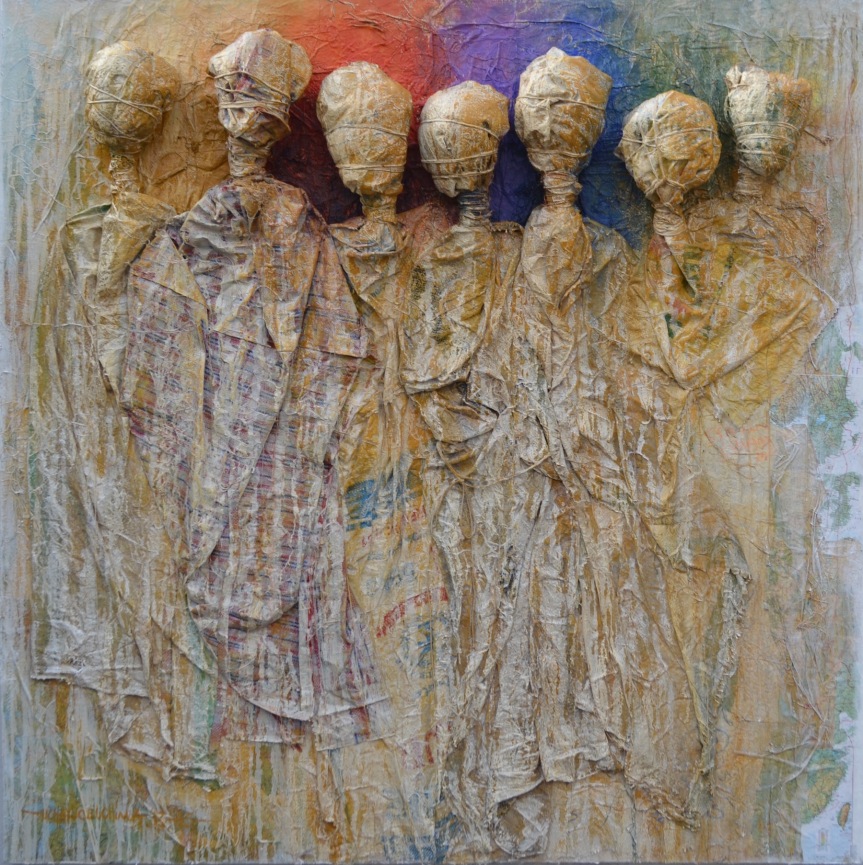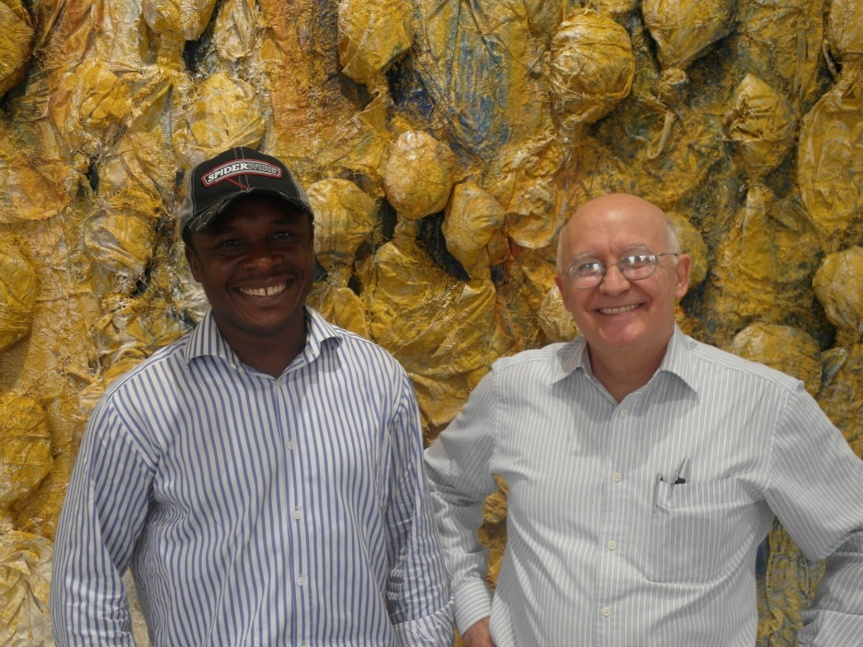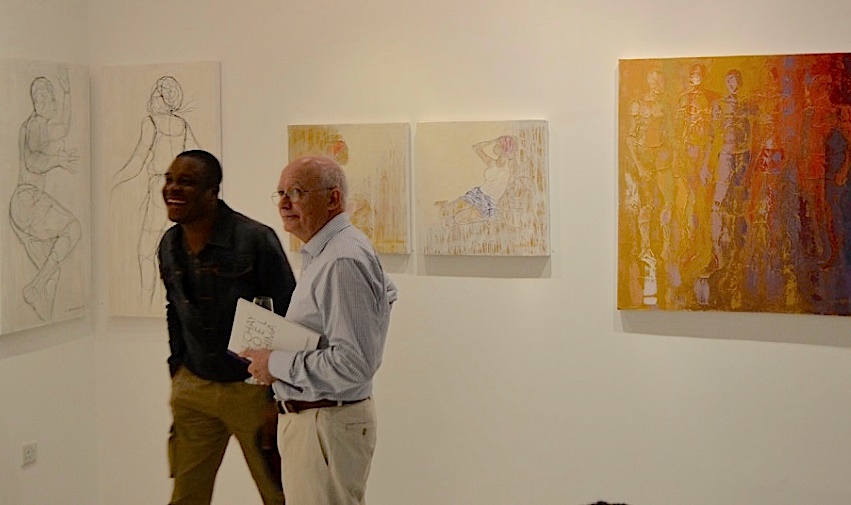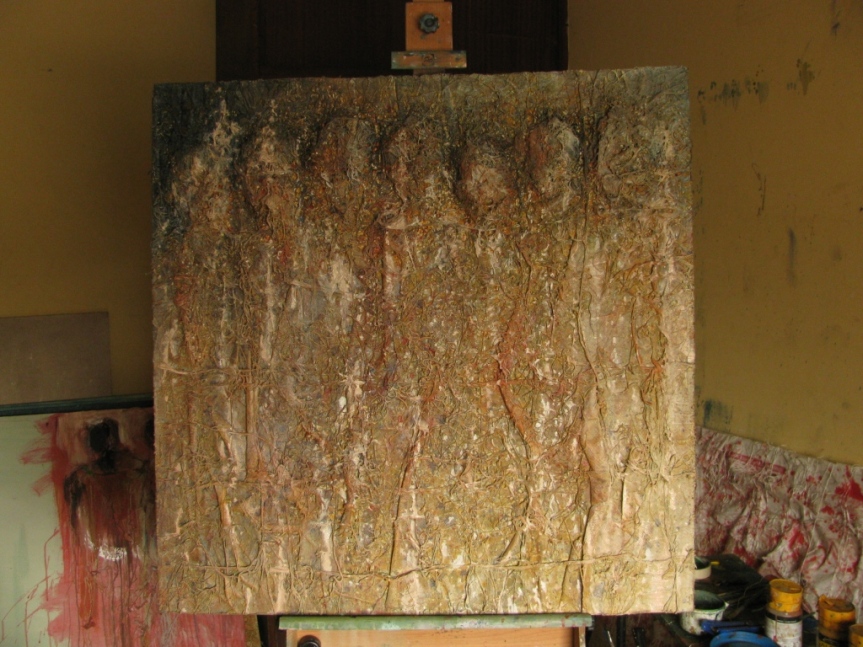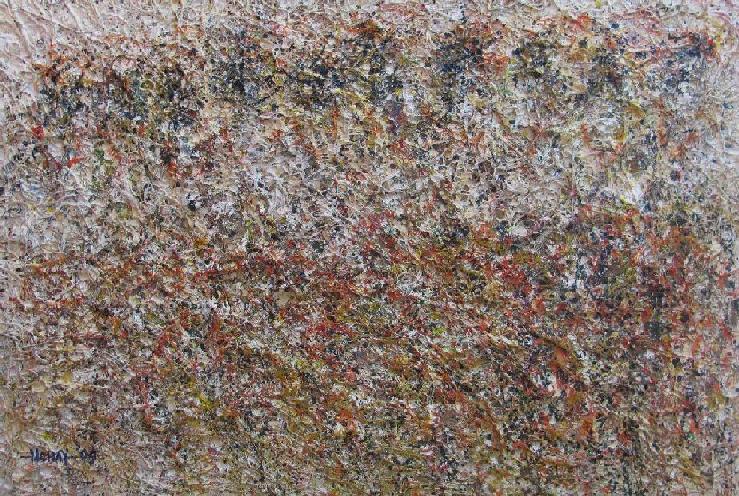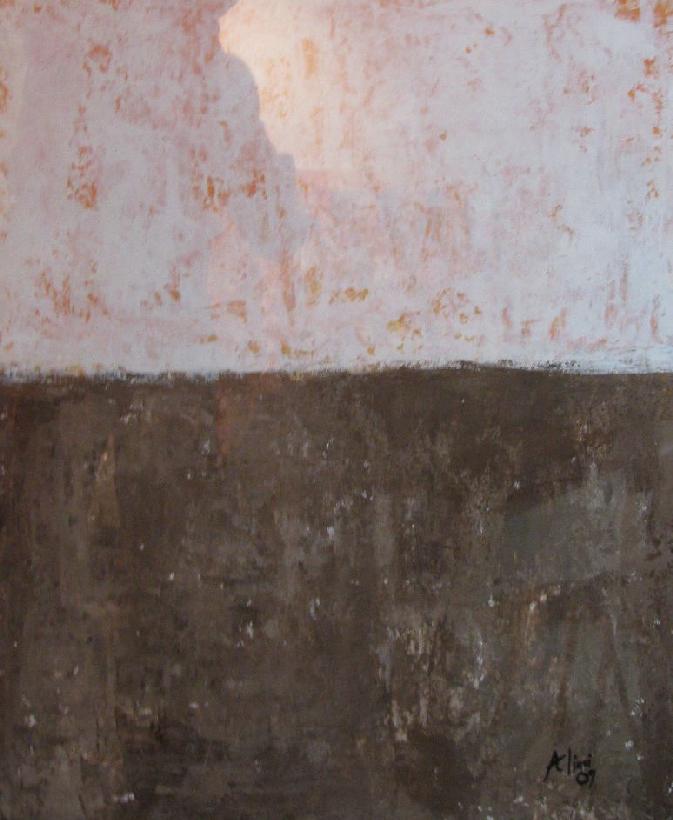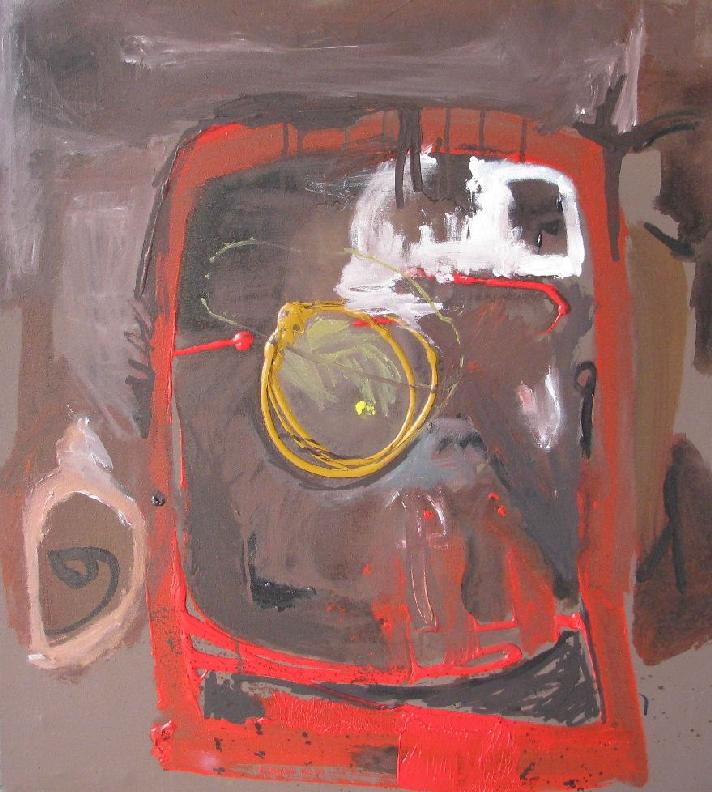THE EARTH AND THE PEOPLE THAT LIVE IN IT
A few weeks ago Ugoma Adegoke asked me whether I could write a brief introduction for the catalogue of Uchay Joel Chima’s new exhibtion. Uchay is an old friend and an artist I respect, so, I agreed happily.
 Crafts and ordinary objects, no matter how skilfully executed, are rarely able to communicate with the viewer or user. Instead, with good works of art, it is possible to connect. If the viewer looks and listens attentively to them, she can discover what they quietly say. The more complex and richer the work, the greater its capacity to permit different levels of interpretation and allow multiple readings.
Crafts and ordinary objects, no matter how skilfully executed, are rarely able to communicate with the viewer or user. Instead, with good works of art, it is possible to connect. If the viewer looks and listens attentively to them, she can discover what they quietly say. The more complex and richer the work, the greater its capacity to permit different levels of interpretation and allow multiple readings.
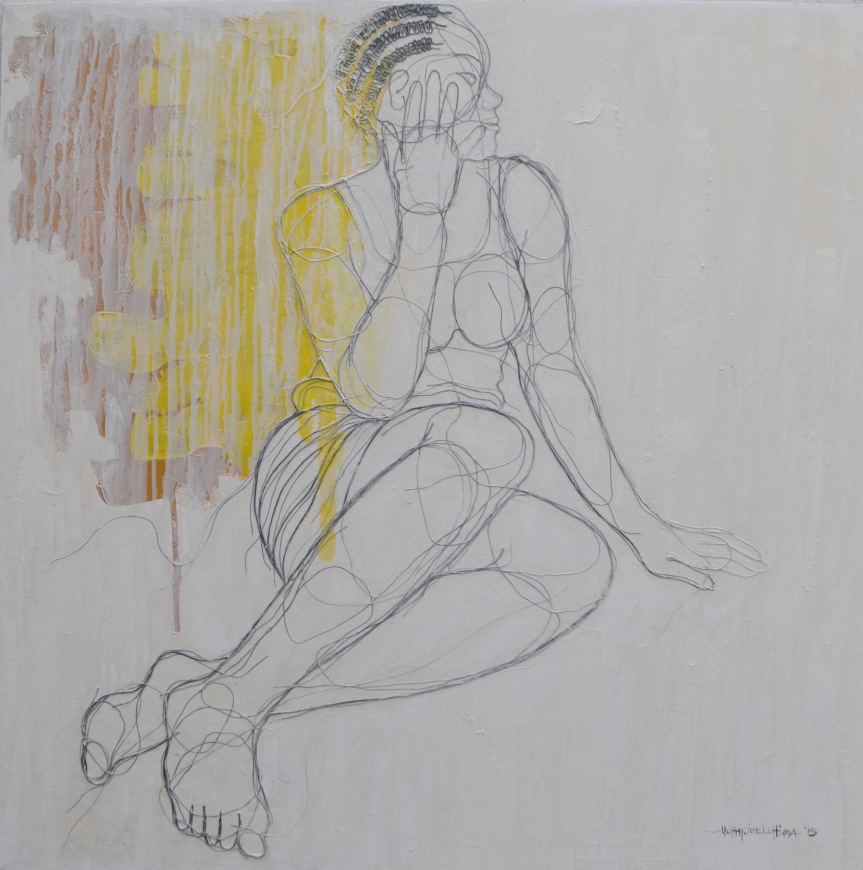 Uchay Joel Chima’s works on canvas might look simple enough at a first glance. Probably, some viewers will be happy with it and not go beyond a superficial reading of them. Those conversant with Uchay’s experimentation over the last 15 years know that there is in them more than a cursory look will tell.
Uchay Joel Chima’s works on canvas might look simple enough at a first glance. Probably, some viewers will be happy with it and not go beyond a superficial reading of them. Those conversant with Uchay’s experimentation over the last 15 years know that there is in them more than a cursory look will tell.
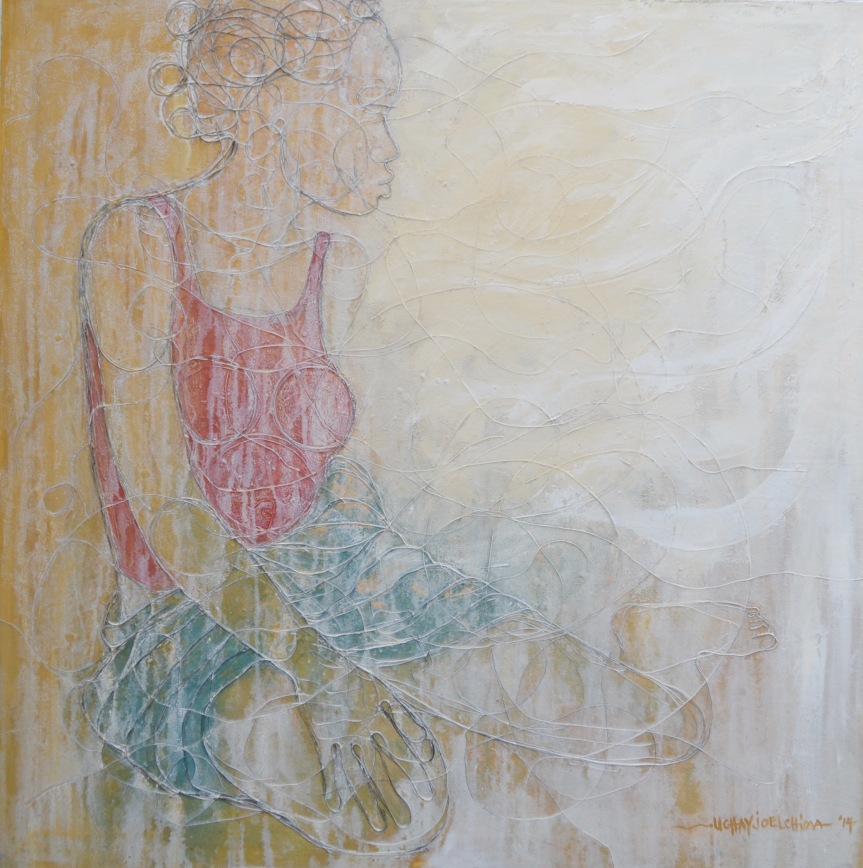 Uchay Chima continues in this exhibition with his untiring effort to explore the possibilities of materials. This has been a constant in his works since he came out of the Institute of Management and Technology in Enugu in 1997 as a fresh graduate. For years, Uchay has used paper, newsprint, ropes, strings, cloth, charcoal, sand and other ordinary materials to look for ways of conveying meaning through his works. His main concerns move around two axes: issues and materials.
Uchay Chima continues in this exhibition with his untiring effort to explore the possibilities of materials. This has been a constant in his works since he came out of the Institute of Management and Technology in Enugu in 1997 as a fresh graduate. For years, Uchay has used paper, newsprint, ropes, strings, cloth, charcoal, sand and other ordinary materials to look for ways of conveying meaning through his works. His main concerns move around two axes: issues and materials.
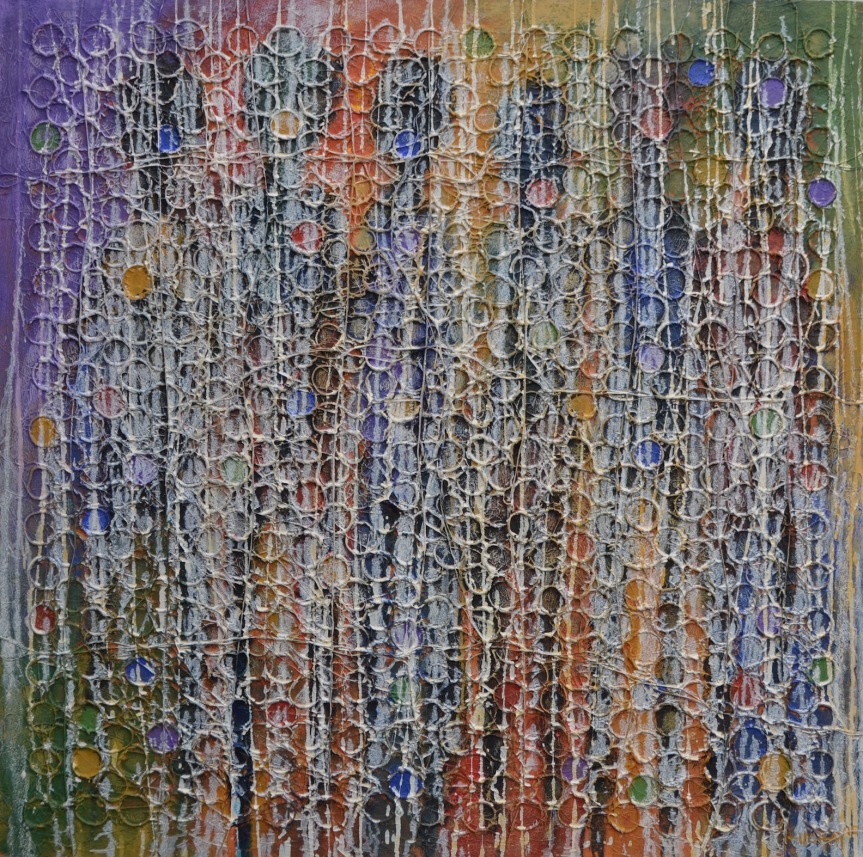 Uchay sees his work as a commentary and a vehicle for action on the land and her peoples. As if to prove it, one of the works on display in this exhibition is titled “The Earth and the People that live in it”. This is an apt title for his approach to art creation. Societal and environmental issues pervade and give meaning to his artistic production. These works have a strong formal presence and character, but at the same time, they are rich in embedded narratives.
Uchay sees his work as a commentary and a vehicle for action on the land and her peoples. As if to prove it, one of the works on display in this exhibition is titled “The Earth and the People that live in it”. This is an apt title for his approach to art creation. Societal and environmental issues pervade and give meaning to his artistic production. These works have a strong formal presence and character, but at the same time, they are rich in embedded narratives.
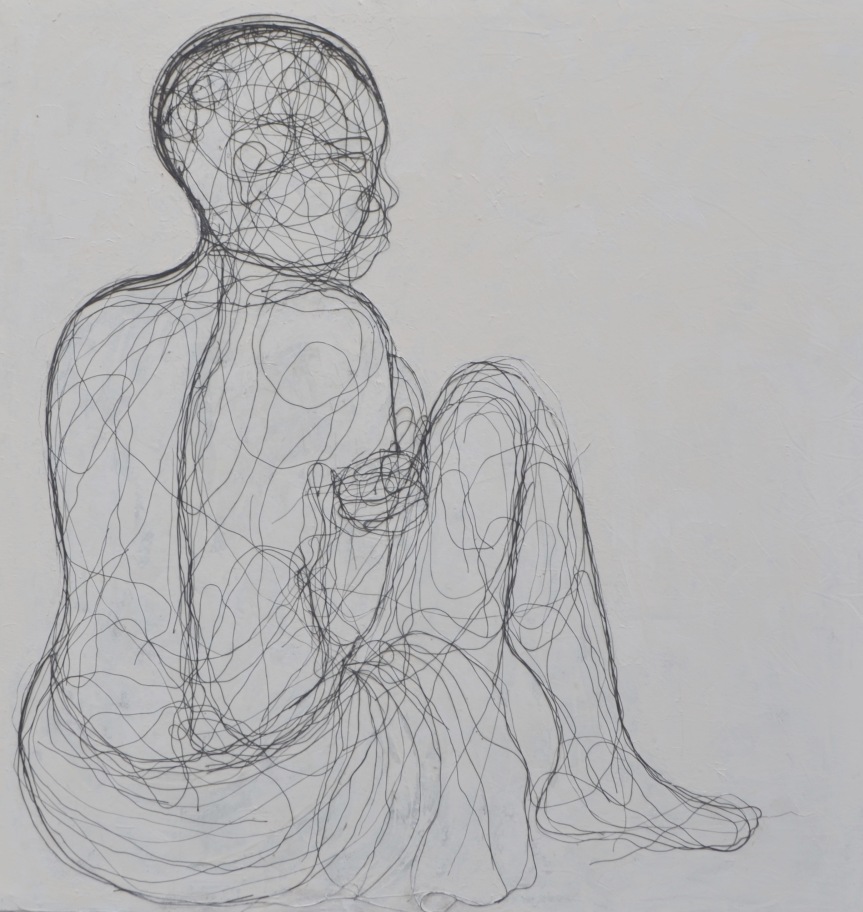 In this exhibition Uchay presents works of three main types: the “string” paintings, the mixed media, high-relief works and the “string” line drawings. The first two groups of works are familiar territory for him and have been frequently incorporated in the past in Uchay’s oeuvre. The works of the third group, the large size line drawings using strings and threads, are new.
In this exhibition Uchay presents works of three main types: the “string” paintings, the mixed media, high-relief works and the “string” line drawings. The first two groups of works are familiar territory for him and have been frequently incorporated in the past in Uchay’s oeuvre. The works of the third group, the large size line drawings using strings and threads, are new.
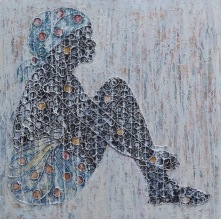
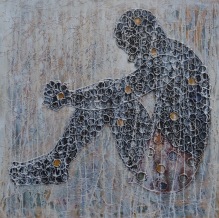 Though in the past he had experimented with small size works –what he calls miniatures- using this medium, it is only with this exhibition that Uchay shows his excellent draughtsmanship and his capacity to create highly expressive works while using such a meagre vehicle as a plain canvas and some yards of string and thread. These works are much lighter in meaning than the other ones but they have a playfulness and freshness that –in their simplicity and economy of means- makes them particularly successful.
Though in the past he had experimented with small size works –what he calls miniatures- using this medium, it is only with this exhibition that Uchay shows his excellent draughtsmanship and his capacity to create highly expressive works while using such a meagre vehicle as a plain canvas and some yards of string and thread. These works are much lighter in meaning than the other ones but they have a playfulness and freshness that –in their simplicity and economy of means- makes them particularly successful.
 For a good numbers of years, Uchay has used strings as a metaphor and a medium for expressing connections, links and ties. As he said referring to them: “I have elected to work with materials that I believe are synonymous with the notions of bonding, togetherness, intimacy and entanglement: strings, ropes and knitting wool. In an era where global upheaval; whether natural, economic or social are the issues of the day – in terms of survival, there is a desperate need for people who can and want to make a positive difference to others”.
For a good numbers of years, Uchay has used strings as a metaphor and a medium for expressing connections, links and ties. As he said referring to them: “I have elected to work with materials that I believe are synonymous with the notions of bonding, togetherness, intimacy and entanglement: strings, ropes and knitting wool. In an era where global upheaval; whether natural, economic or social are the issues of the day – in terms of survival, there is a desperate need for people who can and want to make a positive difference to others”.
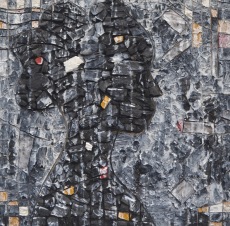
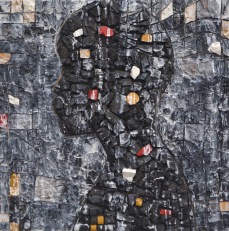 These are ambitious aims for anybody, let alone for an artist striving to make artworks that embody some meaning and armed only with his creativity, a canvas, some pigments and a few ordinary materials. This is a truly worthwhile endeavour, and one to which Uchay is applying his not few abilities and talents. It is good to have him back, reminding us that we all play our role in caring for “the Earth and the people that live in it”.
These are ambitious aims for anybody, let alone for an artist striving to make artworks that embody some meaning and armed only with his creativity, a canvas, some pigments and a few ordinary materials. This is a truly worthwhile endeavour, and one to which Uchay is applying his not few abilities and talents. It is good to have him back, reminding us that we all play our role in caring for “the Earth and the people that live in it”.
Jess Castellote

